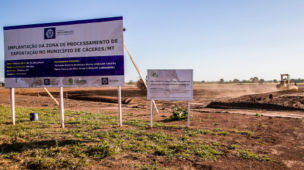Tempo de leitura: 2 minutos
Costa Rica is a strategic destination for the operation of multinational companies in sectors such as services, advanced manufacturing, life sciences, and light manufacturing. To date, more than 250 leading companies worldwide have chosen the country as a place to expand their operations.
Encouraging foreign investment, commercial exchange and employment generation is the main reason for the Free Trade Zone Regime (RZF) in Costa Rica, a measure that can be taken by national and foreign companies wishing to develop their operations in the country.
The “Zona Franca”(Free Trade Zone), is an area delimited in Costa Rica, considered outside the national customs territory that houses companies with tax-exempt activities. According to official data, 1 in 5 formal jobs created since 2015 comes from the RZF, which would be 9.2% of total employment in the private sector.
The last study prepared by the Foreign Trade Promoter (Procomer), indicates that the “net country benefit” for the operation of this type of model has reached a value of US$ 3.179 million. Likewise, the system is “socially profitable”, because in that same year for each incentive dollar, the companies operating in the free zone generated US$ 6.2.
On the other hand, it is indicated that the formal direct employment generated by the companies in the free zone was more than 90,000. In turn, indirect employment reached at least 50,000 people. The same data from Procomer, indicates an increase of 11.6% in the export of free zone products, going from US$ 2,874 million to US$ 3,208 million.
In the beginning, in order to consolidate this regime, it was necessary to adopt a series of policies that dated back from the 1960s, within which the creation of institutions and the promulgation of norms that offer incentives to companies were to be included. After several legislations in this regard, at the end of 1990, the Law of Free Zone Regime (Law 7210) was approved, which is what remains today and which has been reformed over the years.
The most extensive modification was made in December 2010, in compliance with the guidelines of the World Trade Organization (WTO). One of the first free trade zones that were built in the country was the “Parque Industrial and Zona Franca Cartago”, in 1985. The owner of this complex is “Grupo Z”, led by investors of Italian origin and whose free zones present in the national territory generate around 12,000 jobs in the medical device sector, the metalworking industry for vehicles, the aerospace industry, the electronic and electrical industry and the precision metallurgical industry, among others.
In 1986, the “Zona Franca Alajuela” Industrial Park was established, under the responsibility of “Grupo Saret”, headed by national investors. Little by little, more developments were born and the free zones multiplied and companies benefited
Export processing companies or marketers, dedicated to the improvement of the technological level of the industrial or agro-industrial activity and the foreign trade of the country, or also exporters of services of people or companies domiciled abroad, are part of the companies that can opt for the regime of incentives and benefits, previously fulfilling some requirements and obligations. Companies that are interested in entering the Free Zone regime must submit an application to Procomer using the form created for that purpose, in addition to having a minimum investment plan stipulated.






Os comentários foram encerrados, mas trackbacks e pingbacks estão abertos.